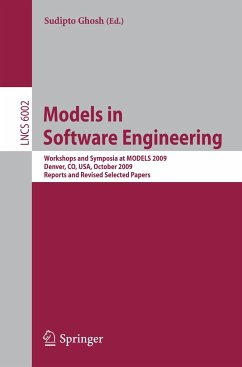
Rationale Management in Software Engineering

PAYBACK Punkte
38 °P sammeln!
Thirty years ago, I first entered the dark realm of software engineering, through a prior interest in documentation. In those days, documentation pretty much meant functional specifications. The idea that stakeholders in a system (its implementers, its end-users, its maintainers, and so forth) might want something other than an alphabetic list of function definitions was just taking hold. There was an exciting (to me) vision of stakeholders accessing and contributing to explanations of how and why aspects of a system work as they do, tradeoff analysis of concomitant downsides, and perhaps even...
Thirty years ago, I first entered the dark realm of software engineering, through a prior interest in documentation. In those days, documentation pretty much meant functional specifications. The idea that stakeholders in a system (its implementers, its end-users, its maintainers, and so forth) might want something other than an alphabetic list of function definitions was just taking hold. There was an exciting (to me) vision of stakeholders accessing and contributing to explanations of how and why aspects of a system work as they do, tradeoff analysis of concomitant downsides, and perhaps even accounts of why other possible approaches were not followed. There were many challenges to overcome in achieving this vision. The most formidable is the belief that people do not like to create or use do- mentation. This negative image of documentation is (unfortunately) more than just the bias of a few incorrigible system developers. It is more like a deep truth about human information behavior, about how human beings construe and act towards information. Humans are, by default, active users of information; they want to try things out, and get things done. When documentation is interposed as a prerequisite between people and a desired activity, they try to skip through it, circumvent it, or undermine it. Desi- ing information to suit the needs and interests of its users is an abiding challenge, but we have come a long way from functional specifications as the only answer.












